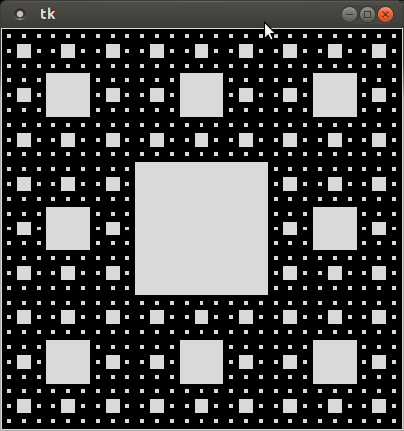Lecture 24 - Test
If you do not currently have a directory for tests, create one in your cs170 directory, and also create a directory for test2
$ mkdir ~/cs170/tests $ mkdir ~/cs170/tests/test2 $ cd ~/cs170/test/test2
This portion of the test is worth 50 total points. You may reference any files within your directory. You may only access the Python documentation website and the tkinter documentation website. NO OTHER WEBSITES ARE PERMITTED. As usual, you are not allowed to directly copy any code from the Internet or another individual without citation. You should also follow all coding standards discussed thus far.
Question 8
Download the linked_list.py
file into your directory. Add a method called
double_all, which creates a duplicate node for every
node in the linked list, and appends it immediately after the
original node.
>>> my_linked_list = LinkedList()
>>> my_linked_list.double_all()
>>> print(my_linked_list)
head -> None
>>> my_linked_list.append("Hello")
>>> my_linked_list.double_all()
>>> print(my_linked_list)
head -> "Hello" -> "Hello" -> None
>>> my_linked_list.append("World")
>>> my_linked_list.double_all()
>>> print(my_linked_list)
head -> "World" -> "World" -> "Hello" -> "Hello" -> "Hello" -> "Hello" -> None
(10 points)
Question 9
In a file called question_9.py, write a function called
list_powers(a_list). This function should take a list of
integers as a parameter, and uses recursion to compute the result of
chaining each number together with the exponentiation operator:
[2, 3, 4] => 2 (34)
>>> print(list_powers([])) 0 >>> print(list_powers([1])) 1 >>> print(list_powers([1, 2, 3])) 1 >>> print(list_powers([2, 3, 4])) 2417851639229258349412352
(10 points)
Question 10
In a file called question_10.py, write a recursive
function print_reverse(my_linked_list_node)
that
takes a linked list node and prints the elements of the list in reverse
order, all on their own line.
Hint: If you can print the elements in the correct order, it is a very simple change to make it print in reverse order.
>>> my_linked_list = linked_list.LinkedList() >>> for i in range(5): ... my_linked_list.append(i) >>> print(my_linked_list) head -> 4 -> 3 -> 2 -> 1 -> 0 -> None >>> print_reverse(my_linked_list.head) 0 1 2 3 4
(10 points)
Question 11
We have discussed a handful of sorting algorithms this semester. One very simple sorting algorithm is known as Pigeonhole Sort. Pigeonhole Sort relies on the fact that more can be known about the data in the list before sorting. For example, we might know that all of the numbers are in the range [0, 100]. In this case, performing one of our usual sorting algorithms is actually less efficient.
Pigeonhole sort creates a list that contains a counter for every element in the range of values. For the above example, that would be a list of size 100, all with 0 as their default value. For every element in the list to be sorted, you increment the count in the appropriate list location. Once you have iterated through the entire list to be sorted, your counter list contains a frequency count for each of the elements in the index. To build a sorted list, you simply iterate over your counter list, and append the index of that list the number of times you found it in the list.
In a file called question_11.py, create a function called
sort_grades(a_list), which takes a list of integers in the range [0,
100]. It should perform the pigeonhole sort algorithm, and
return a copy of the original list in ascending order. You will not
recieve credit for this exercise if you do not follow the above algorithm.
>>> my_list = [80, 82, 79, 96, 88, 100, 91, 81, 100, 61] >>> my_sorted_list = sort_grades(my_list) >>> print(my_list) [80, 82, 79, 96, 88, 100, 91, 81, 100, 61] >>> print(my_sorted_list) [61, 79, 80, 81, 82, 88, 91, 96, 100, 100]
(20 points)
Bonus
In the comments of your question_11.py file, write your estimate of the Big-Oh class of pigeonhole sort.
(2 points)
Submission
When you have finished, create a tar file of your test2
directory. To create a tar file, execute the following commands:
cd ~/cs170/tests tar czvf test2.tgz test2/
To submit your activity, go to cseval.roanoke.edu. You should
see an available assignment called Test 2.
Make sure you include a header listing the authors of the file.
Last modified: Fri Mar 21 12:35:54 EDT 2014

